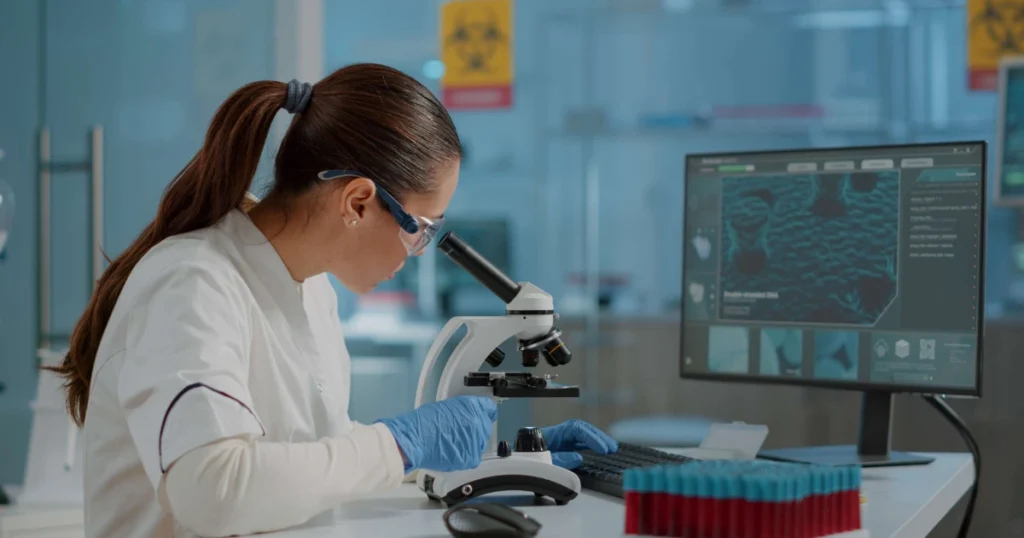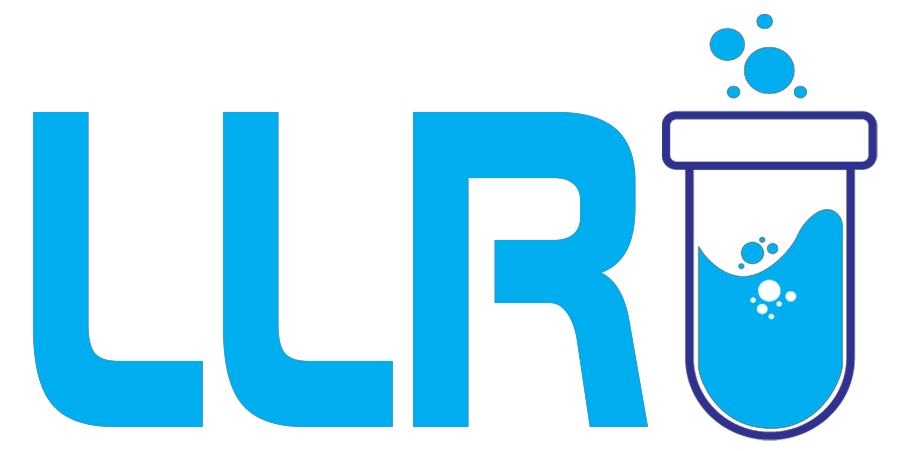Clinical SAS Interview Questions: Getting ready for an interview is always a little nerve-wracking, isn’t it? But when it comes to clinical SAS interview questions, the pressure feels a notch higher. Why? Because roles involving SAS in clinical research are highly technical, industry-specific, and demand a mix of programming skills along with domain knowledge.
Whether you’re applying for a position at a pharmaceutical giant, a Contract Research Organisation (CRO), or a global firm like IQVIA, you’ll likely face a blend of technical, statistical, and scenario-based questions.
And that’s exactly what this blog is about, a full-blown guide to the most commonly asked clinical SAS interview questions and answers, tips for freshers and experienced professionals, plus IQVIA clinical SAS interview questions shared by candidates.
By the end, you’ll have a clear roadmap of what to expect and how to prepare smartly.
What is Clinical SAS?
Before we jump into questions, let’s address the basics. Many interviewers like to start simple, with “What is Clinical SAS?”
Clinical SAS refers to the application of SAS (Statistical Analysis System) programming in clinical trials and research. SAS is widely used in pharma and healthcare to:
- Clean and manage clinical data.
- Generate patient profiles, listings, and summary reports.
- Perform statistical analyses for drug safety and efficacy.
- Ensure compliance with regulatory requirements like FDA and CDISC standards.

If you’re asked this in an interview, a crisp answer could be:
“Clinical SAS is the use of SAS software in managing, analysing, and reporting data generated during clinical trials. It helps ensure accuracy, consistency, and regulatory compliance in clinical research.”
This basic definition might seem obvious, but it sets the tone for deeper questions that follow.
Read More: SAS in Clinical Research: Get 1 Month Free LLRI Course
Basic Clinical SAS Interview Questions
Freshers are usually tested on their SAS basics, understanding of clinical data, and ability to apply theory. Here are some common ones:
1. What are the key SAS procedures used in clinical research?
Typical answer: Procedures like PROC SORT, PROC MEANS, PROC FREQ, PROC TRANSPOSE, and PROC REPORT are commonly used. In addition, PROC SQL is often used for data manipulation, and PROC TTEST or PROC ANOVA may appear in statistical analyses.
2. Explain SDTM and ADaM datasets.
Clinical trials have standard formats:
- SDTM (Study Data Tabulation Model): Defines how raw clinical data is structured for regulatory submission.
- ADaM (Analysis Data Model): Designed for statistical analysis, derived from SDTM datasets.
Tip: Don’t just define, mention their purpose. For example, “SDTM datasets are regulatory submission-ready, while ADaM datasets are designed for analyses like efficacy and safety endpoints.”
3. What is the difference between WHERE and IF statements in SAS?
A classic SAS question:
- WHERE is used before data is read into the PDV (Program Data Vector).
- IF is applied after data is read into the PDV.
In large datasets, WHERE is more efficient.
4. Can you explain the role of macros in clinical SAS programming?
Macros automate repetitive tasks. For instance, generating adverse event listings across multiple studies becomes quicker and less error-prone with macros.
These foundational clinical SAS interview questions show whether you’re comfortable with the language and clinical trial context.
Clinical SAS Programmer Interview Questions For Experienced
As professionals gain experience, interviewers test depth, data handling, efficiency, and regulatory knowledge.
1. How do you handle missing values in clinical datasets?
You could discuss techniques like imputation, use of NMISS function, or creating derived flags for missing data. In regulatory trials, documenting the approach is as important as the method.
2. How do you validate derived datasets?
Validation involves double programming, peer review, and running frequency checks to ensure values align with protocol definitions.
3. How do you prepare outputs compliant with CDISC standards?
Here, mention define.xml, SDTM/ADaM implementation guides, and use of Pinnacle21 validator for compliance checks.
4. How do you optimise SAS programs for large datasets?
Possible answers:
- Use WHERE instead of IF.
- Use indexing.
- Limit variables with KEEP or DROP.
- Break complex joins into smaller steps.
5. Can you explain a challenging scenario you faced in SAS programming?
Experienced candidates are often asked this. Frame an example, like handling inconsistent adverse event coding across studies, and how you solved it.
These clinical SAS programmer interview questions for experienced candidates highlight your problem-solving ability and domain expertise.

Clinical SAS Interview Questions and Answers
This is where many interviews get tricky. Let’s walk through some examples:
- Q: How do you generate a patient profile in SAS?
A: Use data step merges across domains (DM, AE, CM, etc.), apply formats for readability, and output via PROC REPORT. - Q: How do you check the quality of raw clinical data?
A: Run checks for duplicate records, outliers, inconsistent visit dates, or missing patient IDs. - Q: What’s your process for creating efficacy tables?
A: Start with ADaM datasets, summarise by treatment groups, apply statistical tests, and ensure outputs match the Statistical Analysis Plan (SAP).
Interviewers love such clinical SAS interview questions and answers because they reveal if you can connect technical SAS knowledge with trial workflows.
More Clinical SAS Interview Questions and Answers
1. What is the difference between PROC REPORT and PROC TABULATE?
Answer:
- PROC REPORT is more flexible for creating custom tables and allows for complex computations and formatting.
- PROC TABULATE is primarily used for summary statistics in a tabular form.
In clinical trials, PROC REPORT is often preferred for creating output tables in CSR (Clinical Study Report) format.
2. How do you check for duplicate records in a dataset?
Answer:
You can use:
PROC SORT DATA=dataset NODUPKEY; BY patient_id visit; RUN;Alternatively, PROC SQL with GROUP BY and HAVING COUNT(*) > 1 is used for duplicate checks. This is critical in clinical data, as duplicate patient records may violate trial integrity.
3. Explain the difference between MERGE and JOIN in SAS.
Answer:
- MERGE is used in the DATA step and requires datasets to be sorted by the BY variable.
- JOIN is done in PROC SQL, which doesn’t require prior sorting.
Both are used for combining datasets like DM (Demographics) and AE (Adverse Events).
4. How do you create a dataset flagging patients with serious adverse events?
Answer:
DATA SAE;
SET AE;
IF severity = ‘Severe’ OR outcome = ‘Death’ THEN SAE_Flag = 1;
ELSE SAE_Flag = 0;
RUN;
This type of scenario is very common in clinical SAS programmer interview questions for experienced candidates.
5. What is a CRF annotation, and why is it important?
Answer: A CRF (Case Report Form) annotation is a document linking CRF fields to dataset variables. It ensures traceability of how raw data maps into SDTM datasets. Regulatory authorities like FDA often review CRF annotations during submissions.
6. What steps do you take when your program output doesn’t match the Statistical Analysis Plan (SAP)?
Answer:
- First, verify your code for errors.
- Cross-check derived variables against SAP definitions.
- Review input datasets for inconsistencies.
- Discuss discrepancies with statisticians if the SAP itself needs clarification.
7. How do you generate treatment emergent adverse events (TEAE)?
Answer: TEAEs are adverse events that occur after the first dose of study medication. To generate them, compare AE start date with First Dose Date. Any AE with onset after dosing is flagged as TEAE.
8. How do you document your SAS programs for regulatory submissions?
Answer: Documentation usually includes:
- Program header (study info, author, purpose).
- Detailed comments within code.
- Change logs.
- Output file references.
Clear documentation ensures reproducibility and is a must in regulatory submissions.
9. What is your experience with Pinnacle21?
Answer: Pinnacle21 is a validation tool used to check SDTM and ADaM datasets against CDISC standards. In interviews, mention you’ve used it to validate datasets and resolve compliance issues before submission.
10. How do you handle discrepancies between raw data and derived datasets?
Answer:
- Identify discrepancies through frequency checks or listings.
- Trace back to CRF and raw datasets.
- Communicate with Data Management teams if corrections are needed.
- Document resolution steps for audit trails.

IQVIA Clinical SAS Interview Questions
IQVIA, being one of the world’s largest CROs, is a dream workplace for many SAS programmers. Candidates often share their interview experiences online. Based on sources like Glassdoor and AmbitionBox, here are some examples:
- Q: What is the difference between SDTM and ADaM?
- Q: How do you use PROC SQL for dataset joins?
- Q: How do you validate efficacy endpoints?
- Q: Can you write a SAS program to transpose adverse event data?
- Q: Explain your experience with Pinnacle21 or validation tools.
Interviewees also mention technical tests where they had to write SAS code live. For example, one candidate was asked to create a summary report of adverse events by severity level and treatment group.
And here’s the exciting part, since we’re an internal hiring partner with IQVIA, many of our trained students have already cleared these exact rounds and secured positions at IQVIA. This makes the preparation we offer more relevant, practical, and closely aligned with what recruiters expect.
If you’re preparing specifically for IQVIA clinical SAS interview questions, make sure to practice hands-on coding, not just theory.
How to Prepare for Clinical SAS Interviews
Now that we’ve seen the variety of clinical SAS interview questions, let’s talk preparation.
- Revise SAS basics: Data steps, procedures, and SQL.
- Understand clinical trial workflows: Know CRF (Case Report Form), SDTM, ADaM.
- Practice coding problems: Sites like LexJansen or online forums have good examples.
- Take mock tests: Time yourself writing code.
- Learn compliance standards: CDISC, FDA guidelines, 21 CFR Part 11.
As one IQVIA candidate shared:
“The panel doesn’t just check SAS skills, but also whether you understand why data is structured that way in clinical trials.”
LLRI Clinical SAS Course
If you’re serious about preparing, structured training helps.
LLRI Clinical SAS Course: 1-Month FREE with Diploma Bundles
- Master Clinical SAS for clinical trials: Base SAS, data manipulation, macros, SQL, and compliant reporting.
- Includes SAS Base exam preparation and placement assistance.
- Get 1-Month Clinical SAS FREE with these Programs.
- Offer applicable on new enrolments.
Options:
- Pro Advanced Diploma in Clinical Research + Clinical SAS
- Base SAS, Data Manipulation, Automation
- SAS Macros & SQL
- SAS Base Exam Prep
- Enrol Now
- Any PG Diploma Course + Clinical SAS
- Advanced Techniques & Complex Datasets
- Clinical Trial Reporting
- Regulatory Standards & Compliance
And here’s something worth noting, we’re an internal hiring partner with IQVIA, one of the biggest CROs in the world. Several of our students have successfully secured roles at IQVIA after completing our programs*. That means when you train with us, you’re not just learning SAS, you’re also opening direct doors to career opportunities.
If you’re looking for clinical SAS training in Bangalore or exploring a clinical SAS course in Bangalore, this could be a great stepping stone.
Why is SAS Important in Clinical Research?
Some interviewers ask this directly: “Why SAS, not R or Python?”
SAS dominates clinical research because:
- It is FDA-approved and widely accepted in submissions.
- It has built-in validation and compliance support.
- CROs and pharma companies have legacy systems built around SAS.
This shows how sas in clinical research isn’t just about programming, it’s about regulatory trust.

On A Final Note…
Preparing for clinical SAS interview questions isn’t just about memorising syntax, it’s about connecting SAS skills with clinical research knowledge. Whether you’re a fresher or an experienced programmer, interviewers want to see if you can handle data accurately, follow standards, and produce compliant outputs.
We’ve covered everything from clinical SAS programmer interview questions for experienced professionals to clinical SAS interview questions and answers for beginners, and even IQVIA clinical SAS interview questions.
So, if you’re serious about cracking that next role, keep practicing, explore structured courses like the LLRI Clinical SAS Course, and remember, confidence comes from preparation.
As the saying goes, “Success is where preparation and opportunity meet.”
FAQs
Q1. What is Clinical SAS?
It’s the application of SAS programming in managing, analysing, and reporting clinical trial data.
Q2. How do I prepare for clinical SAS programmer interview questions?
Revise SAS basics, learn SDTM/ADaM standards, practice coding, and understand trial workflows.
Q3. Are IQVIA clinical SAS interview questions very tough?
They’re challenging, but manageable with practice. Expect coding rounds, regulatory compliance questions, and scenario-based challenges.
Q4. Is clinical SAS training in Bangalore useful for freshers?
Yes, institutes in Bangalore offer hands-on training and placement support. It’s a good choice if you’re looking to break into the industry.
Q5. What’s the future of SAS in clinical research?
While R and Python are growing, SAS continues to dominate regulatory submissions, especially in pharma and CROs.

